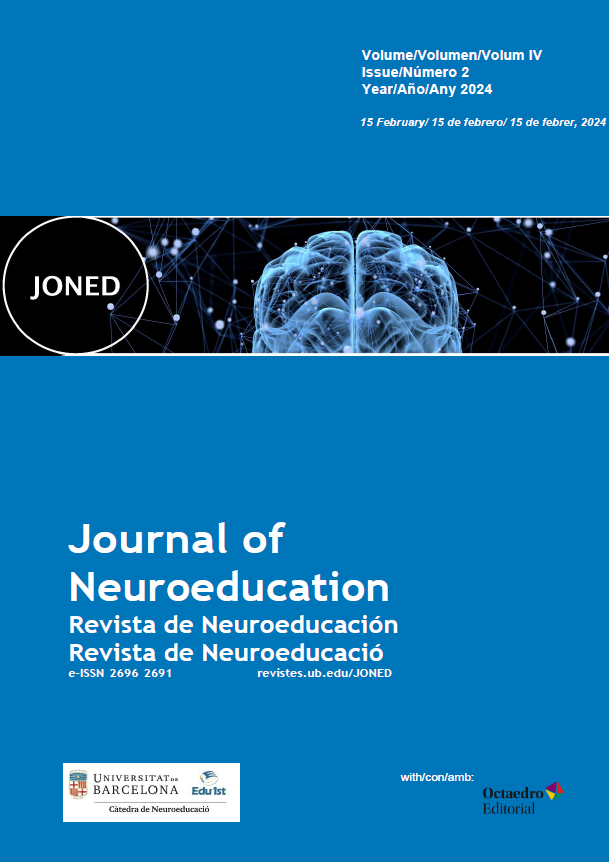Creativity in Venezuelan university students: beliefs, perceptions and abilities
DOI:
https://doi.org/10.1344/joned.v4i2.44128Abstract
This research sought to delve into the understanding of creativity in a sample of Venezuelan university students as part of a neuroeducational project called C.R.E.A. (Creation, Retention, Emotion, Attention) which is focused on the understanding, search and promotion of creativity at an educational level. The objectives were: to know the beliefs about the role of the brain in creativity, to investigate the perception of creativity associated with the careers offered and to evaluate possible relationships between said perception, the level of divergent thinking and the implementation of creative solutions. The study was exploratory, with a sample of 26 students, two per career, of both sexes, between 20 and 27 years of age, from the Andrés Bello Catholic University, in Caracas. Self-perception of creativity was diagnosed through questionnaires and the Guilford Alternative Uses Test was used to evaluate divergent thinking and the implementation of creativity. The predominant belief in the sample associated creativity with the right cerebral hemisphere and with humanistic careers. However, it was found that engineering students produced the greatest number of creative solutions, with a significant elaboration level. Additionally, a close relationship was found between the level of divergent thinking and the implementation of creative responses, but not between self-perception of creativity and creative potential.
Downloads
Published
Issue
Section
License
Copyright (c) 2024 Rubén R. Carvajal, Katherine Martínez, Valentina Vélez

This work is licensed under a Creative Commons Attribution-NonCommercial 4.0 International License.
The authors who publish in this journal agree to the following terms:
a. Authors retain copyright and grant the journal the right of first publication
b. Texts will be published under a Creative Commons Attribution Non Commercial License that allows others to share the work, provided they include an acknowledgement of the work’s authorship, its initial publication in this journal and the terms of the license, and not for commercial use.



